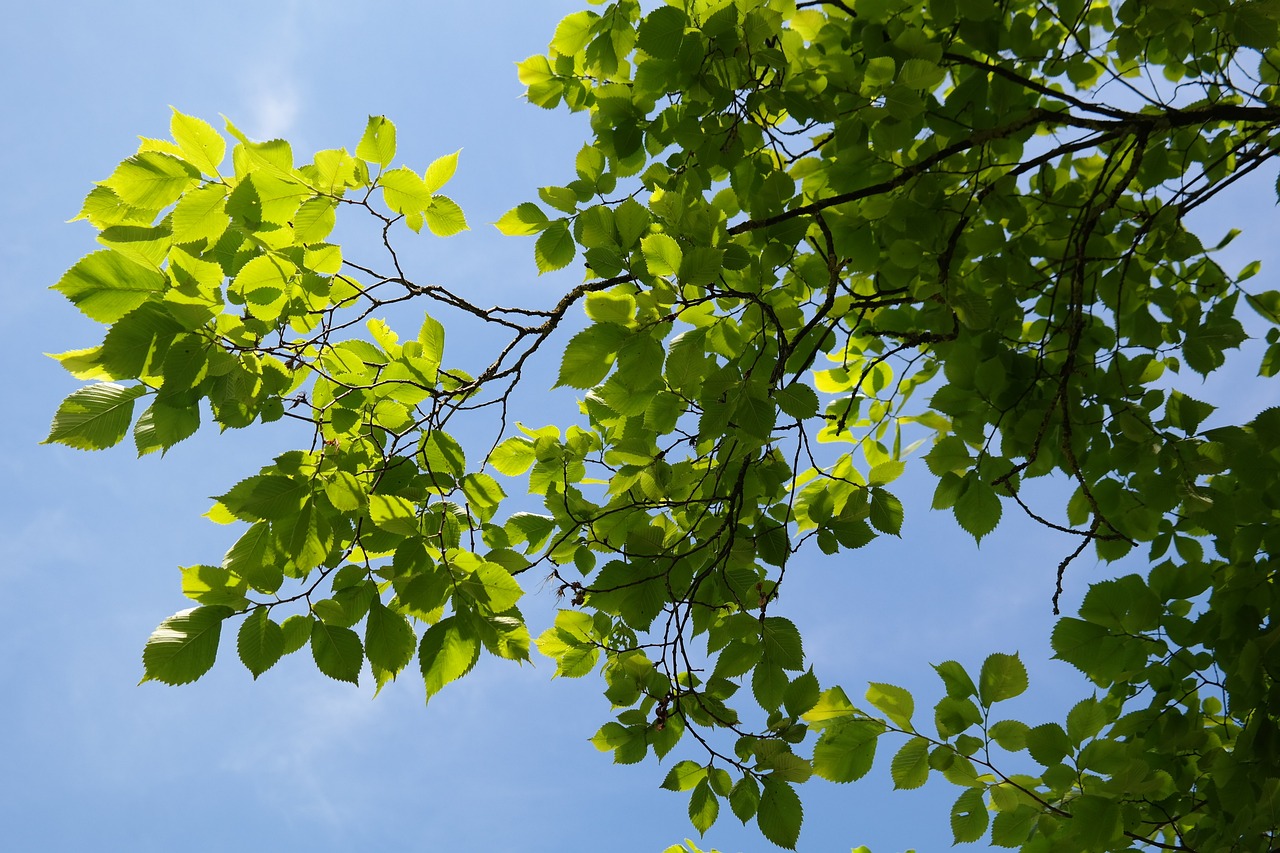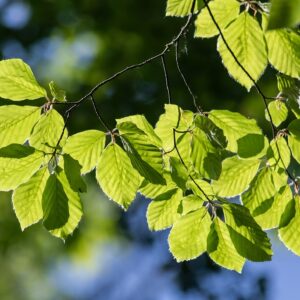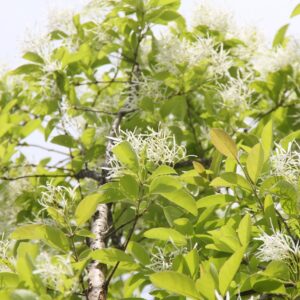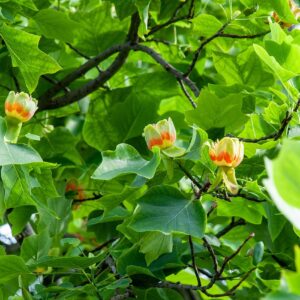American Elm (Ulmus americana), also known as White Elm, is a large deciduous tree native to eastern and central North America. It is known for its elegant shape, broad canopy, and historical significance in urban landscapes. American Elm is a majestic and versatile tree known for its elegant shape, broad canopy, and historical significance. Its adaptability to various soil types and its role as a classic street and shade tree make it a valuable addition to urban and rural landscapes.
Appearance:
Size: American Elm typically grows 60-80 feet (18-24 meters) tall with a spread of 50-70 feet (15-21 meters). In optimal conditions, it can reach up to 100 feet (30 meters) in height. It has a broad, vase-shaped canopy with a dense, spreading growth habit.
Leaves: The leaves are simple, alternate, and elliptical to ovate, measuring about 4-6 inches (10-15 cm) long and 2-4 inches (5-10 cm) wide. They have a serrated edge and a pointed tip. The upper surface is dark green and glossy, while the underside is paler and slightly hairy. In the fall, the foliage turns yellow before dropping.
Flowers: American Elm produces small, inconspicuous flowers in early spring (March to April) before the leaves fully emerge. The flowers are greenish and appear in clusters. They are wind-pollinated and are not particularly showy but are important for the tree’s reproduction.
Fruit: The fruit is a small, winged samara (a type of seed), about 1/2 inch (1.3 cm) long. The samaras are produced in clusters and are dispersed by the wind. They mature in late spring to early summer.
Bark: The bark is grayish-brown and becomes deeply furrowed with age. It has a distinctive ridged and scaly texture. The mature bark is relatively rugged and provides a classic elm appearance.
Habitat: American Elm prefers well-drained soils and is commonly found in a variety of habitats, including floodplains, bottomlands, and upland woods. It thrives in loamy, fertile soils but can tolerate a range of soil types. It is hardy in USDA Hardiness Zones 3 to 9.
Uses:
Ornamental: American Elm is valued for its elegant shape, broad canopy, and architectural presence. It has been widely used as a street and shade tree due to its broad, arching branches and dense foliage. Its vase-like shape makes it a popular choice for urban and park landscapes.
Economic: The wood of American Elm is strong and flexible, making it suitable for a variety of applications, including furniture, cabinetry, and millwork. It is also used in making sports equipment such as baseball bats due to its durability.
Ecological: The tree provides habitat and food for various wildlife. The seeds are eaten by birds, and the large canopy offers shelter and nesting sites. Its extensive root system helps stabilize soil and prevent erosion.
Care:
Pruning: Prune American Elm in late winter or early spring before new growth begins. Pruning helps maintain the tree’s shape, remove any dead or damaged branches, and improve air circulation within the canopy. Avoid heavy pruning during the growing season to minimize stress on the tree.
Watering: The tree prefers regular watering, especially during dry periods. It is tolerant of brief droughts once established but thrives in consistently moist soil.
Fertilizing: A balanced, slow-release fertilizer applied in early spring can support healthy growth. American Elm is not overly demanding in terms of fertilization but may benefit from additional nutrients in poor soils.
Pests and Diseases: American Elm is susceptible to Dutch Elm Disease, a serious fungal disease that has historically devastated elm populations. It is also vulnerable to pests like elm beetles and aphids. Regular monitoring and proper care are essential for managing these issues. Disease-resistant cultivars and treatments are available to help combat Dutch Elm Disease.





